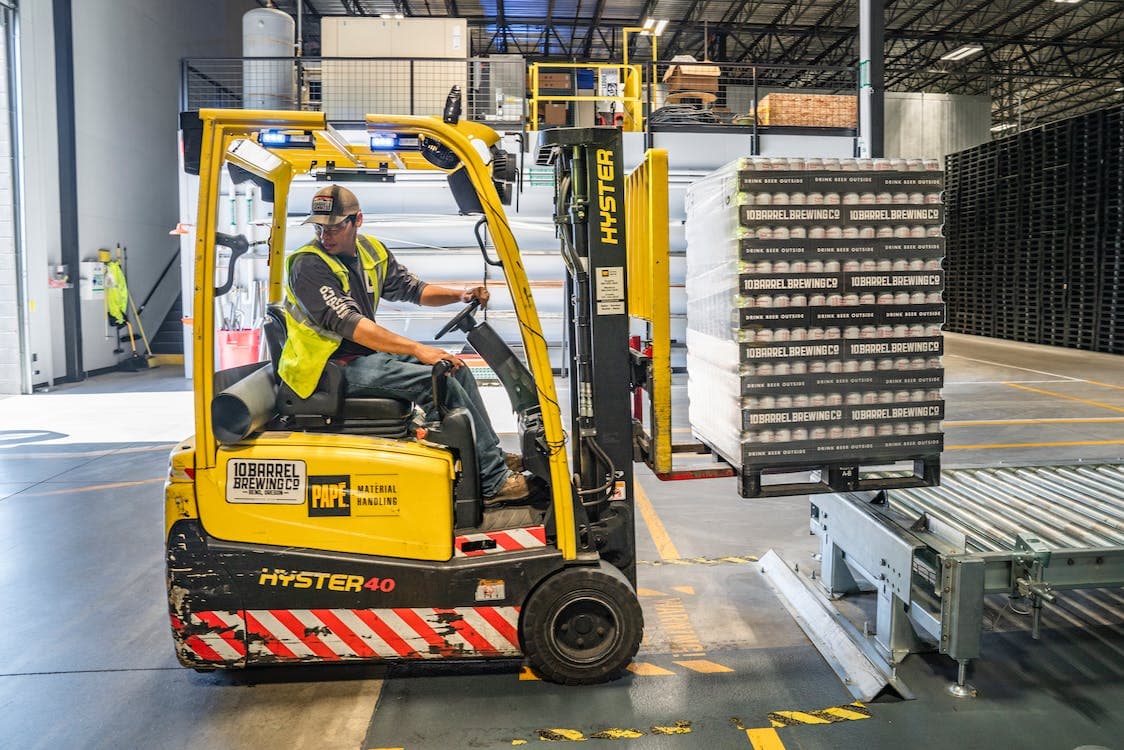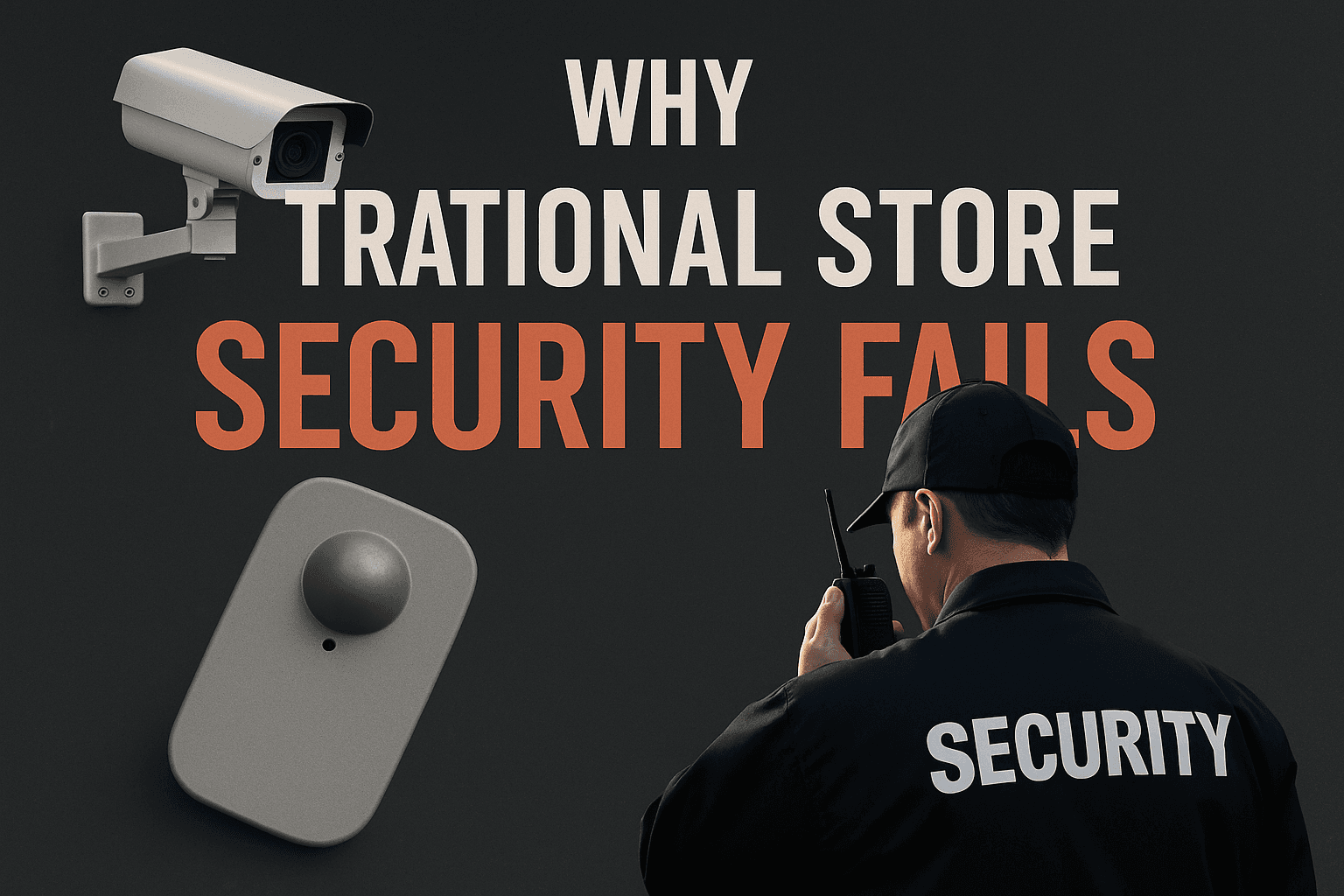Could your business benefit from knowing where inventory or any piece of equipment is located within its facilities? Would this information enhance efficiency and improve customer service? Indoor asset tracking is what makes this happen.
What’s indoor asset tracking? It’s a system that monitors an item’s location and status in a building. Several technologies make this happen, including RFID, BLE, UWB, Wi-Fi, NFC, and GPS. If that looks like alphabet soup, keep reading as we decipher the jargon and walk you through all the essentials. We’ll cover the world of indoor asset tracking and unlock its potential for your company.
Indoor asset tracking technology has transformed how businesses manage their assets, ranging from inventory to supplies to equipment. This system enables a business to instantly track and locate vital items within a building or specific area. This real-time visibility is useful in warehouses, manufacturing plants, freight terminals, and large facilities where tracking assets can be challenging.
Indoor asset tracking technology has grown because today’s companies have to be smarter about asset use, security, and productivity. Being able to closely monitor assets in real time helps with these objectives.
How Do Indoor Asset Tracking Technologies Work
Indoor asset tracking relies on a combination of hardware and software to detect and monitor an asset’s location in real time. In simple terms, the hardware gets attached to the asset, usually as a tag. The tag emits a signal that is picked up by receivers installed throughout the facility.
The signal is processed through a central system that converts the data into location information. The software allows users to view and analyze the location details. Many systems provide insights into asset utilization, location history, workflow, and more.
More advanced indoor asset tracking systems can collect information about asset conditions, such as temperature, humidity, and movement. This data can be invaluable in industries where items have stringent storage requirements or for monitoring valuable or sensitive assets.
Setting Up an Indoor Asset Tracking System
The process of indoor asset tracking begins by tagging all the items that need to be monitored. Signal-generating tags are usually based on Radio Frequency Identification (RFID), Bluetooth Low Energy (BLE), Wi-Fi, NFC, or Ultra-Wideband technology. More basic systems (that don’t produce signals) are based on barcodes or QR codes. Each tag or scannable code contains a unique identifier.
Types of Indoor Asset Tracking Technologies
Businesses and organizations can choose from several indoor asset tracking technologies, each with its advantages and disadvantages. The best option depends on your specific needs and requirements. The most common technologies are:
- RFID: Radio Frequency Identification uses radio waves to transmit data from an RFID tag to a reader. It’s a versatile technology that’s suitable for indoor and outdoor use, providing up to a few hundred years of range. RFID is low-cost and particularly useful for larger warehouse and equipment yard scenarios. There are also different types of RFID tags, with cheaper passive units providing only presence information (a confirmation that the item is in the general vicinity). Active RFID tags offer more precise location details.
- BLE: Bluetooth Low Energy is a power-efficient version of basic Bluetooth technology and can transmit signals with a range of up to 100 meters. BLE is easy to install, low-cost, and ideal for medium-sized facilities.
- Ultra-Wideband (UWB): UWB technology provides highly accurate indoor location tracking, typically within a few centimeters. It’s ideal for applications that require precise positioning, such as in a factory or a warehouse with large quantities of small items.
- Wi-Fi: Wi-Fi tracking uses a facility’s existing Wi-Fi network for asset monitoring. Items are enabled with tags that communicate with the various Wi-Fi access points to determine location. These systems are dependent on Wi-Fi signals that are strong and steady.
- NFC: NFC (near-field communication) tracking uses tags and operates like RFID. However, it’s for close proximity monitoring, with a range of inches. It has limited use for broad-scale asset tracking but is ideal for checking an item in or out.
It’s not unusual for a company to use more than one tracking technology, depending on what needs to be tracked.
GPS vs. Indoor Asset Tracking
GPS (global positioning satellite) is a powerful tool for asset tracking. Its worldwide reach is ideal for many scenarios, such as tracking the movement of a vehicle or construction machinery. GPS is strongest outside, where tracking devices can get a clearer signal from orbiting satellites. As such, it’s less suitable for indoor asset tracking.
Hapn, a leading GPS service provider, offers Cell Assist, a technology that supplements GPS technology with a cellular-based signal. Integrating the two systems ensures consistent real-time tracking, but not at room-level or more precise accuracy. Indoor asset tracking is best handled by the technologies covered earlier.
What to Look for in an Indoor Asset Tracking Tag
There are many factors to consider when choosing an indoor asset tracking tag. It starts with the technology you’ll be using. As mentioned above, each technology has different capabilities. For instance, a sprawling warehouse may be best served with RFID, while UWB provides centimeter-level location accuracy.
Other tag characteristics include:
- Battery Life: Real-time indoor asset tracking depends on tags that transmit signals, which require power. Some tags incorporate single-use batteries, while others come with replaceable batteries.
- Durability: Assets that are used or stored in harsh conditions (dust, extreme temperatures, moisture, etc.) require tags that are damage-resistant.
- Cost: Tag cost is directly tied to performance and features, so balancing budget with need is crucial. For instance, some RFID tags are cheap and practically disposable, while Bluetooth and Wi-Fi tags are more expensive (think cents versus dollars).
Implementing an Indoor Asset Tracking System
Creating an indoor asset tracking system doesn’t have to be overwhelming. Thorough planning and execution can make for stress-free implementation. Here are the steps you need to follow:
- Define Needs: Crucially, you’ll need to identify what you want from an indoor asset tracking system. Do you need basic “here/not here” information? Or are more details required? For example, location and condition. What level of location accuracy do you need? How many assets will be tracked—dozens, hundreds, thousands?
- Select the Technology: With a complete understanding of your company’s needs, choose an appropriate tracking technology. Remember that range, accuracy, functionality, and battery life affect cost.
- Start Small: Rather than jump in with both feet, consider a pilot program—test indoor asset tracking with a select number of items or within a smaller area of the facility. If the trial works well, wide-scale implementation will be easier and quicker.
- Install the Equipment: Add the tracking tags to the assets and set up the receivers or readers in the facility. The receivers should be positioned for maximum coverage.
- Configure the Software: With the hardware in place, install the software, and configure how you need to display the data.
- Test the System: With everything in place and operational, test that the system works. Confirm the accuracy of the location data, the reliability of the tags and receivers, and the usability of the software.
- Train Staff: Ensure that employees understand how to use the system and interpret the data it provides. This will help ensure that you get the most out of your indoor asset tracking system.
Tracking Production Line Processes
Indoor asset tracking is very useful for monitoring production lines. By attaching tags to products as they move through the line, you can see where they are in real time. This visibility helps spot problems like bottlenecks, waste, and mistakes so you can take quick action to improve productivity and quality.
For example, tracking may show a product waiting too long at one station, signaling an issue there. Or a product may skip a station completely, indicating a process error. By catching these problems early, you can fix them fast.
Asset tracking also aids inventory management on the line. Knowing exactly where parts and materials are means they are available when needed. This reduces downtime from waiting on components and improves efficiency.
Understanding Material Flow Analysis
Material flow analysis (MFA) tracks materials through a system. With indoor asset tracking, MFA can map asset movements in a facility.
Real-time tracking shows asset patterns and trends. This visibility can optimize use. For example, tracking may show assets frequently moved between two spots. Moving those spots closer makes sense.
MFA also finds inefficiencies. It can identify assets that move a lot but are rarely used. Or assets often in the wrong place at the wrong time. Fixing these issues improves efficiency and cuts costs.
Use Scenarios: Indoor Asset Tracking
Indoor asset tracking can benefit numerous companies across a range of sectors. Here are some examples:
- Warehouse: Warehouses can use indoor asset tracking to monitor inventory. The system will provide real-time visibility of stock levels and locations, reducing stockouts and overstocks and improving order fulfillment.
- Healthcare: Hospitals can rely on indoor asset tracking to manage medical equipment. The system can quickly locate devices and machinery, reducing search time while improving utilization.
- Manufacturing: Manufacturing plants can depend on indoor asset tracking to monitor the flow of materials on the production line. The system can be configured to identify bottlenecks and inefficiencies, enhancing productivity and reducing waste.
Best Practices for Indoor Asset Tracking
Here are crucial best practice areas to get the most out of your indoor asset tracking system:
- Database: Maintaining an accurate database is critical for your indoor asset tracking system to work effectively. Continually update the database whenever assets are added, removed, relocated, or otherwise changed. Keeping this information current ensures optimal performance.
- Integration: To get the maximum value from your indoor asset tracking system, integrate it with other existing systems within your business, such as inventory control, maintenance management, or others.
- Analytics: Don’t just track your assets; also analyze the data you collect. Look for patterns, trends, and other insights that can help maximize operations and efficiency. Useful information is hidden in the data.
- Training: Any system is only as good as those who use it. Properly training your staff on using an indoor asset tracking system is crucial. Employees who can interpret the data and understand how the technology works can gain valuable insights.
The Benefits of Indoor Asset Tracking
Indoor asset tracking offers numerous advantages that can help streamline operations and improve efficiency. These benefits include:
- Reducing time spent on searching for assets
- Lessening the risk of an asset being lost or stolen
- Improving inventory management
- Enhancing customer satisfaction
In short, indoor asset tracking is all about gaining control over items that are valuable to your business.
FAQs
What is indoor asset tracking?
Indoor asset tracking is a system that monitors an asset’s location and status within a building in real time. It relies on technologies like RFID, Bluetooth, and Wi-Fi to detect signals from tags attached to assets. This provides visibility into where assets are located.
How does indoor asset tracking work?
It works by attaching tags to assets that emit a signal. Receivers installed in a facility pick up these signals. The software then converts the signals into location data that shows where the assets are. Advanced systems can also collect detailed data like temperature and movement.
What are the benefits of indoor asset tracking? Benefits include reduced time spent searching for assets, better inventory management, lower asset loss/theft, improved customer service, and enhanced operational efficiency. Real-time visibility into asset location provides actionable data.
What technology is best for indoor asset tracking?
It depends on your specific needs. RFID offers versatility and range. BLE is easy to install and low cost. UWB provides highly precise locating. Wi-Fi leverages existing networks. Choose based on factors like accuracy level, price, and battery life.
How do you implement an indoor asset tracking system?
Key steps are defining your needs, selecting technology, starting small with a pilot, installing hardware/tags, configuring software, testing the system, and training staff.
How can indoor asset tracking help my warehouse?
Warehouses can greatly benefit from indoor asset tracking. The system provides real-time visibility into stock levels and locations by attaching tags to inventory. This reduces stockouts, overstocks, and order errors. It also aids inventory management by ensuring parts are where and when they need to be.


